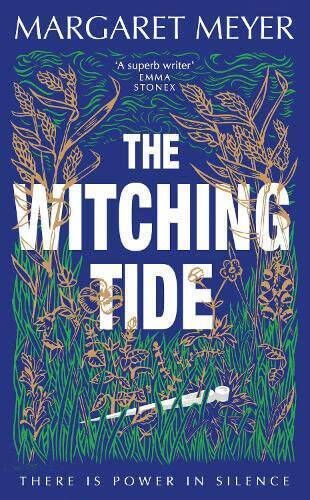Book Review: Margaret Mayer's The Witching Tide casts an eye on the witch-hunts

Margaret Meyer. Image courtesy of Hachette UK.
- The Witching Tide
- Margaret Meyer
- Phoenix, £16.99
Between 1645 and 1647 in East Anglia, in large part due to the efforts of just two witch-hunters, approximately 120 innocent people were executed, the vast majority of them women. This number was greater than in all other English witch-hunts of the preceding two centuries.
Set in the imaginary village of Cleftwater in 1645, a time of Civil War, and inspired by these events, Canadian author Margaret Meyer’s debut novel concerns Martha Hallybread, a woman in her 40s, who is a servant in the household of merchant Kit and his pregnant wife Agnes. Martha, who is mute and converses in sign language, is a midwife and a herbalist.
Their lives are catastrophically altered when the witch-finder Silas Makepeace arrives, with Mistress Krill, his pricker. These were women who would examine the bodies of suspects, looking for marks that would not bleed when pricked, and thus proof (one of the very many) of witchcraft.
Prissy, a servant in the household is taken, along with other women from the village and from neighbouring towns and districts. Prissy had been present with Martha when a local woman had given birth to a deformed baby, a child that died not long after.
Martha, against her will, is summoned to assist with the investigation of her friends and neighbours who have been accused of sorcery and of consorting with the devil.
Martha has a talisman, a poppet. The little wax witching doll, which she had been bequeathed by her later executed mother, becomes something of a repository for Martha’s dreams, hopes and fears; an interlocutor as she struggles to make sense of the events she has become part of. This poppet has a life of its own, disappearing and appearing again numerous times throughout the story.
Playing out over the course of just a few weeks, events in the village become nightmarish for those suspected. The descriptions of the brutal interrogation process and the hangings that follow are wrenching.

The book shows how witch-hunting was a source of income for many local people — innkeepers, carpenters, gaolers, and others — and of how whole communities became involved in one way or another.
Its strengths include Meyer’s fine prose, and its vivid evocation of life in a 17th-century English village, how such a place looked and smelled, its social relations, and the language spoken by its inhabitants.
There is some fine descriptive writing, particularly of light and water. To quote just two examples: ‘‘the stripe of her shadow lay on the ground and she saw its tremor.’’ And ‘’the sun was a pale ulcer in the caul of cloud.’’ The reader will learn a fair amount of herbal lore.
The interactions with the aforementioned poppet and descriptions of some other possibly supernatural events sit uneasily with what is otherwise a gripping and visceral realist narrative. This strand of the story is its least successful, for this reader.
Witch-lit is this year’s thing according to a recent piece in , which name-checks amongst a slew of similar books published or due this year. This phenomenon, the piece suggests, is related to recent attacks on women’s freedoms, the reversal of Roe versus Wade in the United States being perhaps just the most egregious example.
As well as dedicating the book to the women who fell victim to the East Anglian witch-hunt, Meyer has said that it is also dedicated to the #MeToo movement.
An interesting, and in many regards, accomplished debut.






